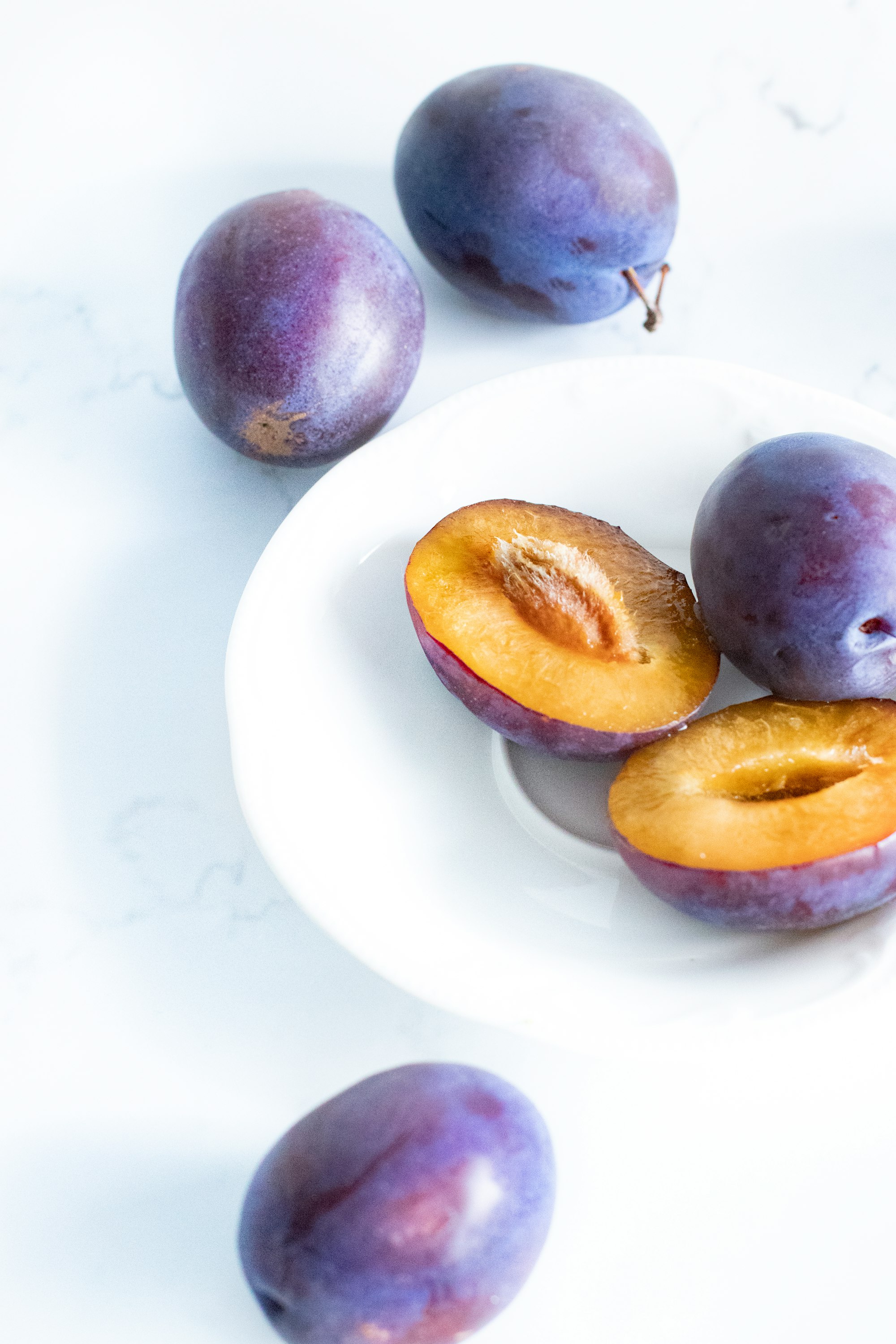Whenever we sit down to eat a meal or a nice healthy snack such as a plum, our dogs are normally the first ones to come and look at us with their amazing eyes as if to ask, “can I have some of that too?” If you are asking yourself “can dogs eat plums?” then the answer can be a bit more complicated compared to other fruits.
Below is a definitive guide on why dogs should never eat plums, signs that you can look for that indicate that they have taken a bite or two, and what you need to do if this ever happens.
Can Dogs Eat Plums?
Yes, dogs can typically safely eat a small piece of plum without any major health issues but most veterinarians don’t recommend you give plums to your dog. Plums and other fruits have the potential to add additional vitamins and nutrients into your dog’s diet but plums actually have a few risk factors for your dog's health. Although eating a small piece of plum might not be inherently dangerous for your dog’s health, plums do contain a dangerous substance for your dog and can also be a choking hazard for your dog.
We will discuss more reasons for why dogs shouldn’t have plums in the next section
While things like apples and bananas are healthy doggy snacks, plums are the complete opposite and contain substances that are poisonous to dogs, meaning they should never be given plums to snack on. Because these substances are contained throughout the plum plant, dogs should not even chew on plum foliage or fruit that has had the pip removed.

Why Can’t Dogs Eat Plums?
While it is a good idea to not let dogs eat stone fruits in general since the large-sized stones can cause choking and damage to their digestive tract due to having sharp edges, the thing that makes plums poisonous to dogs is a chemical called hydrogen cyanide and a few variations of this chemical. Along with hydrogen cyanide, the other known substances in plums that are poisonous for dogs are amygdalin, prunasin, and cyanogen, all of which have similar effects.
While the highest concentrations of these chemicals are in the stone of the plum, there is enough throughout the flesh of the fruit and the plant itself to make the consumption of any part of the plum tree bad for your dog. When any part of the fruit or plant is eaten by a dog, they can in mild cases experience gastric irritation (an upset stomach), and in serious cases can experience respiratory problems and organ failure. This is because when cyanide is ingested, it can prevent the body’s cells from being able to absorb oxygen while also destroying blood cells which carry oxygen and nutrients throughout the body.

Signs That Your Dog Has Been Poisoned By A Plum
Since cyanide poisoning can prevent the body’s cells from being able to absorb oxygen, this can lead to cell asphyxiation which in turn leads to the complete collapse of the respiratory system and death if left untreated. It all depends on how much a dog eats, however. If a small piece of plum falls on the ground and they quickly dive on it, then they will most likely be okay. However, if they consume a large part of a plant like leaves or roots, or eat multiple fruits including the stones, then you may need to make a quick trip to the vet.
The most common signs that your dog is experiencing gastric irritation or respiratory problems due to cyanide poisoning are:
Symptoms of Plum Poisoning In Dogs
- Difficulty breathing, such as panting heavily and being short of breath
- If their pupils are unusually dilated
- Tremors
- Seizures
- Convulsions and vomiting
- Seeming agitated and uncomfortable/unable to rest
- Foaming at the mouth
- Collapsing or being unable to get up
- Shock, such as confusion, dizziness, disorientation, or passing out
- An inability to breath at all
Since plums contain sugar, they might seem attractive to a dog as a tasty snack. They may also see a plum stone and use that as a little chew toy. Because plums can be attractive objects to dogs, it is important to keep an eye on them when visiting an area that has plum trees, and if they are regularly exposed to plums then some training may be necessary to dissuade them from munching on lots of them.
What You Should Do if Your Dog Has Eaten a Plum
If you know that your dog has just nommed on some plums or is showing any of the above symptoms then you will need to call your local vet and be prepared to take your pet as soon as possible. Check around to see if you can find any plum remnants to tell whether they have eaten any of the stones and try to estimate how many they have consumed if possible.
Once at the vet’s office, it may be necessary to detox the dog through the use of a range of IV fluids that can make their way into the dog’s bloodstream and react with the cyanide to form a safe compound which removes the toxic form of cyanide from the dog’s blood. And whether a pup requires an IV line or not to clean their blood, they may have to spend the next 24 hours at the vet’s office for further monitoring so they can be given oxygen, fluids, and anything else that is going to help them recover.
The level of poisoning that any dog receives from eating plums is going to depend on the size of the dog along with the amount of plums (or parts of the plant) that they eat. Eating a tiny amount of plum flesh may not result in poisoning, however they may need to visit the vet if they eat a plum stone or large amounts of fruit or foliage.
For more helpful articles about pet-parenting tips, check out the Off Leash blog at TryFi.com.
Want to know more about TryFi.com? The Fi Dog Collar is a GPS tracking collar that not only keeps track of your dog’s location, activity levels, and sleep patterns, but it also alerts you if your dog escapes your backyard. This is the fastest way to find your dog after an escape. Try the Fi Dog Collar today!

